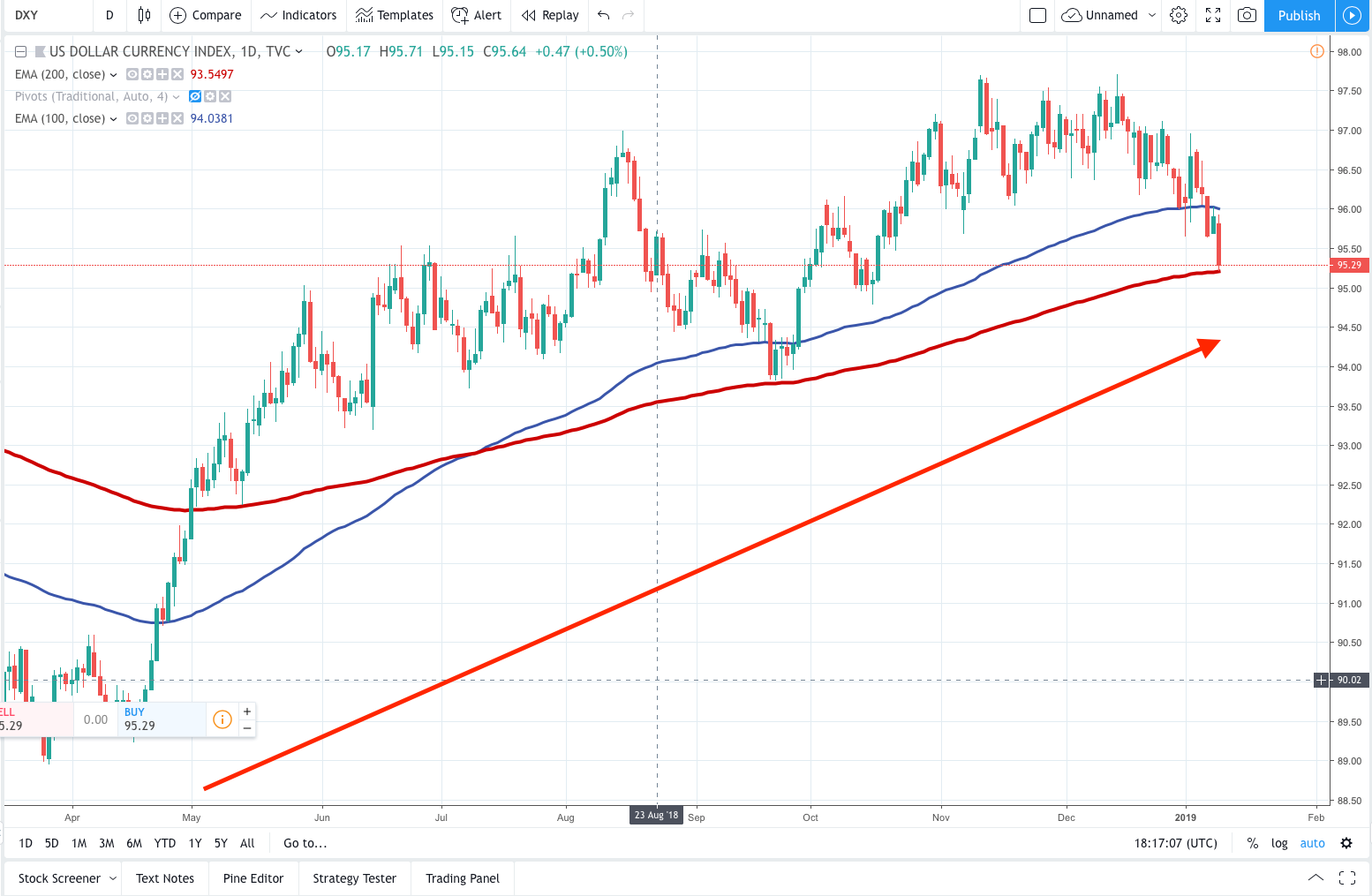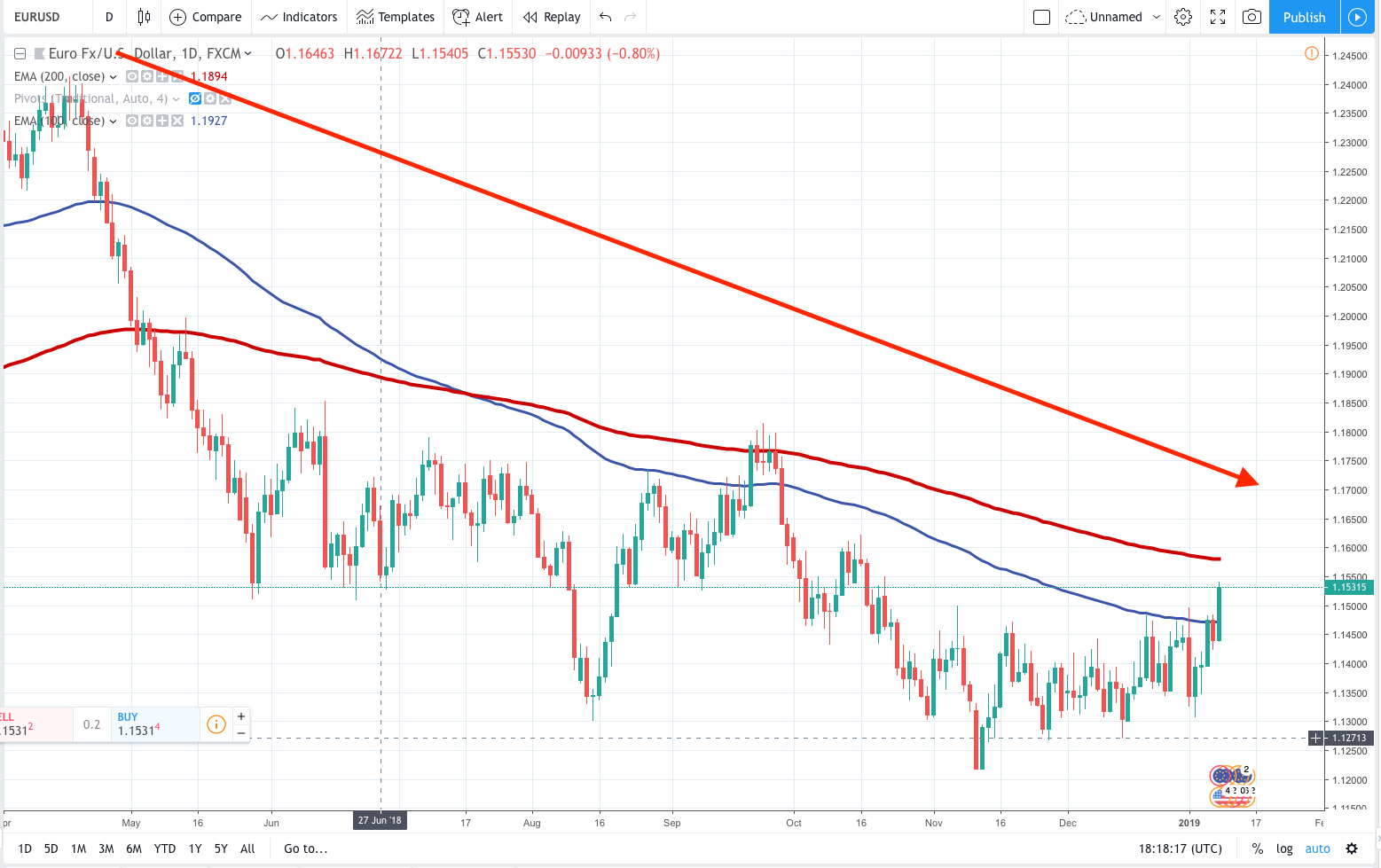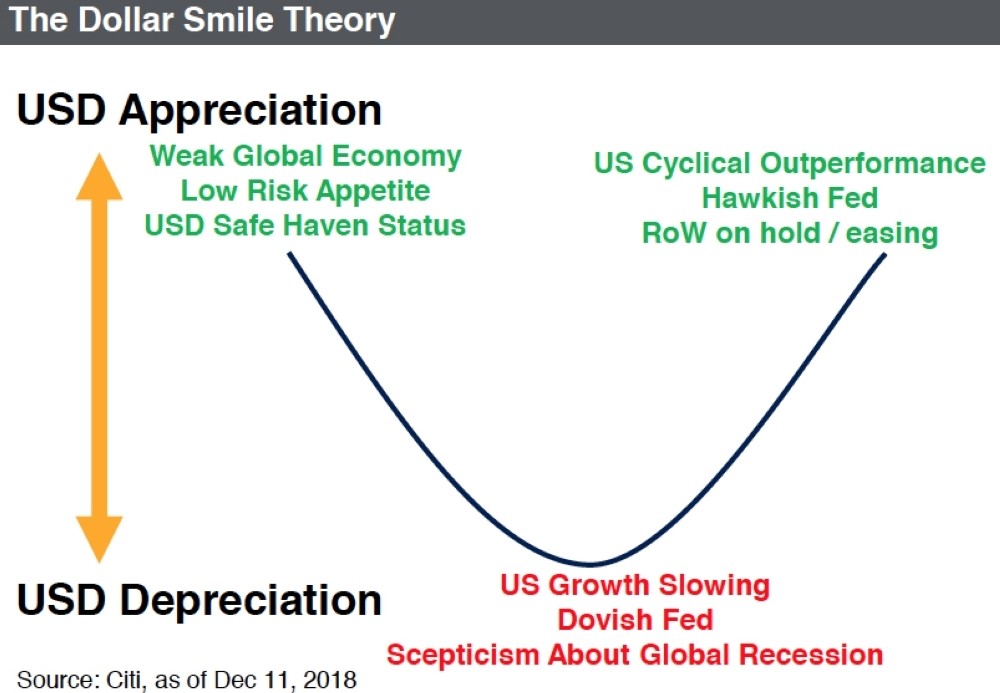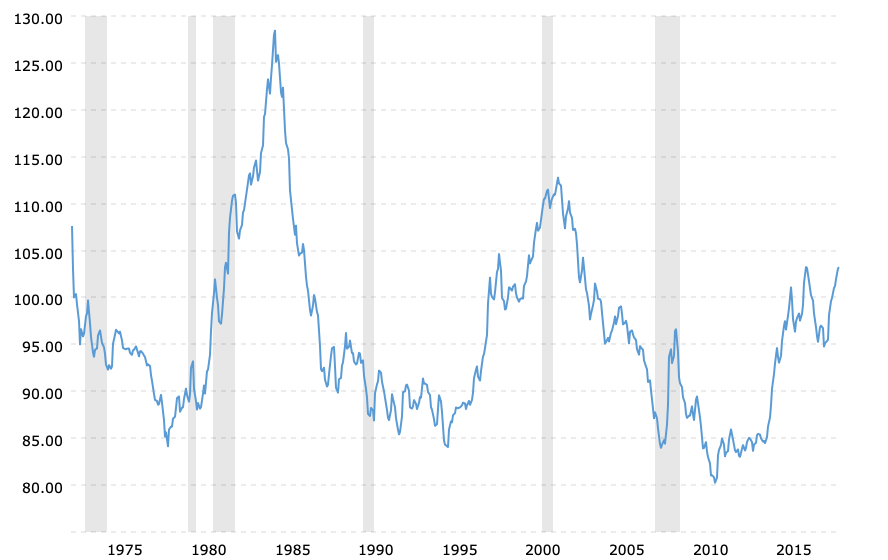Products You May Like
The Dollar Index is another tool for your trading toolbox
You don’t have to be reading analysts posts or market wraps for
very long before you come across references to the US Dollar Index. The US
Dollar Index is a very useful tool in your trading as it can confirm a
directional bias for the currency pair you are trading and also warn you of any
headwinds that your trade might face before you pull the trigger. The
Federal Reserve is the most important central bank in the world with the US
dollar being the most traded currency in the world, comprising of around 70% of
all transactions on a given day. So, having a handle on what the Dollar is
doing overall on any given day is going to be a key advantage for any
trader. The Dollar Index will help you do just that.
So, what is the US Dollar Index?
The US Dollar Index (USDX) started in March, 1973 for
a value of 100.000. In February 1985 it traded as high as 164.7200 (depending
on your price feed) and in March 16, 2008 it traded as low as 70.698. At time of writing it sits around 95.32. You
can see the approximate, historical
range of the Index below.
The US dollar Index compares the USD to a basket of currencies
The US Dollar Index is a measure of the value of the US dollar in
relation to the value of a basket comprised of some of the US’s most important
trading partners. The Index is comprised of six foreign currencies. Due to the
fact that all these countries are not the same size ,the Euro for example comprises of 23 countries, the
USD Index gives varying weight to each currency. The biggest proportion of the
Dollar Index (USDX) is made up of the EURO which has a 57.6% weight. The
currencies are weighted in the following ways:
- The
Euro (EUR), 57.6% weight - The
Japanese Yen (JPY), 13.6% weight - The
Great British Pound (GBP), 11.9% weight - The
Canadian Dollar (CAD), 9.1% weight - The
Swedish Krona (SEK), 4.2% weight - The
Swiss Franc (CHF) 3.6% weight
It will become immediately apparent that the Index is heavily
influenced by the Euro. This gives us the first clue as to how the USD Index
can be useful for making trading decisions.
The USDX is the Anti-Euro Index
When the Euro loses values this mean the Dollar Index gains
value. The nearly 60% average weighting means that the EUR/USD pair and the
USDX are inversely correlated.
In the chart below, since May 2018, the EUR/USD has been steadily falling

In contrast below, since May 2018, the US dollar Index has been
rising.

Armed with this knowledge the US dollar Index becomes an
excellent indicator for the EUR/USD. At the time of writing the Index is
testing the daily 200 moving average while the EURUSD is testing the daily 200
moving average. The Dollar Index can be eyed for clues as to the EUR/USD’s next
move
The US Dollar Index is a guide for the direction of the USD in
any pair
Trading any pair with a USD half will be guided by the USD index,
so here are a couple of key facts to keep in your mind:
•If the USD is the base currency (USD/xxx ), then
the US dollar Index and the currency pair will typically move in the same
direction.
•If the USD is the quote currency. (xxx/USD) then
the US dollar index and the currency pair will typically move in opposite
directions.
The US dollar index and the smile theory.
The US dollar index can give you a quick broad picture
of the dollar and help you see what is going on with the market. The
smile theory is worth mentioning since it is such a good way of
mentally holding the three varying ways the dollar responds to different
situations. If you look at the picture below you can see a kind of smile.

On
the left hand side of the smile you have USD strength , which is when the
global economy is struggling. This is where you have JPY, CHF strength and USD
gains too as money is put into less risky dollars, The bottom part of the smile
is where the USD depreciates on a dovish Fed. At the time of writing, in
January 2019, the USD is falling with a more reserved Jerome Powell looking to
the data before continuing the pace of hike rates. The right part of the smile
is when the USD gains value on a hawkish fed and risk on environment. This smile theory is useful as a quick rule of thumb
for understanding the dollars present position and what is likely to happen
next. By getting into the habit of noticing the USD index as soon as you start
trading you can speed up your analysis on the dollar and also gain invaluable
insights to inform your next trading decision.
